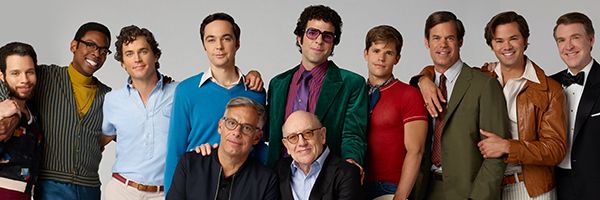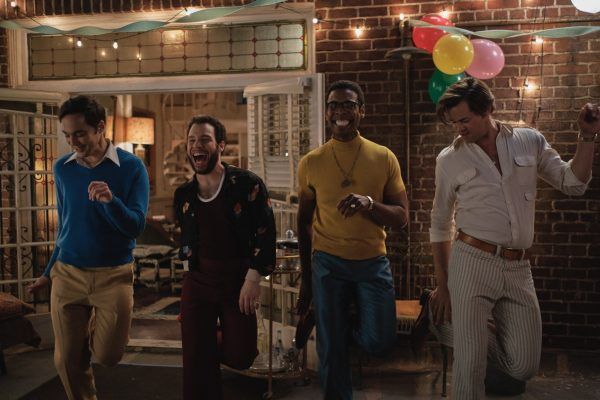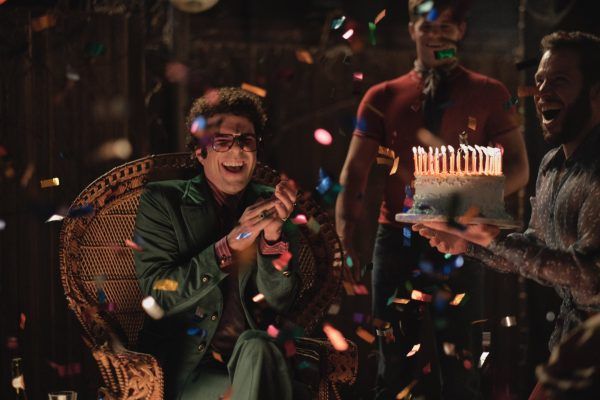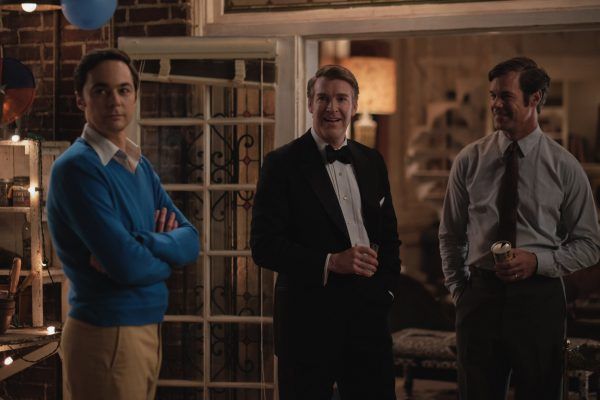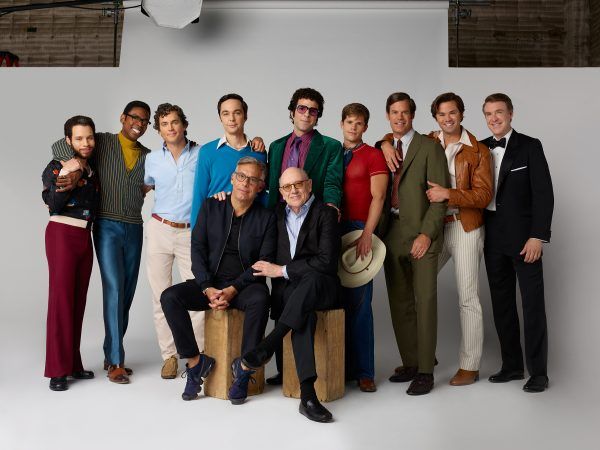The entire cast and director of the 2018 Tony-winning Broadway revival of Mort Crowley's The Boys in the Band return for this 2020 Netflix film adaptation, and you can feel it. There's a quiet confidence, a mode of working both locked-in and free to be free, a commanding grasp of the material's most elliptical, complicated aspects in every frame of the film. The audience is drawn in, needing to know what happens next, needing to think and re-think every moment. Joe Mantello's work is richly captivating, accessible yet unpredictable, and likely one of the best Netflix original films yet.
Michael (Jim Parsons) is hosting a birthday party for a friend, Harold (Zachary Quinto, making quite the entrance). Many party guests will be attending Michael's small New York City apartment, a motley crew of men with various neuroses played by Matt Bomer, Andrew Rannells, Charlie Carver, Robin de Jésus, Michael Benjamin Washington, and Tuc Watkins. All of the men at this party are openly gay. All except one. Alan (Brian Hutchison), Michael's straight college roommate, crashes the party after making a curiously emotional phone call to Michael. And his arrival kickstarts a series of revelations, admissions, and deep emotional examinations.
This kind of "locked room, real-time, just characters talking" mode of storytelling is perfect for the theater, but can sometimes yield stiff cinematic results; the unnatural creaks and groans added in translation. No such misstep happens in this film, with Mantello and co-writer Ned Martel (American Horror Story) satisfyingly, subtly filling in gaps for these characters' contexts ably, and editor Adriaan van Zyl (Pose) knowing exactly when and how to cut to impressionistically lensed flashbacks to punch what our characters are saying. The man lensing all of this is Bill Pope, a cinematographer I've praised on this site before, and he turns in sterling work yet again. Cramping his characters in a wide-but-compressed 2.4:1 frame, Pope's work gives the text exactly what it needs, orienting us with fluid camera moves, surprising us with its keen and clever ensemble blocking, locking down on hard close-ups during gutting monologues, and even providing a visual joke here and there (one shot finds Harold about to pick up a phone... before a rack focus reveals he's grabbing more booze instead). Mantello hasn't lost any of his directorial groove in this adaptation; only gains here.
In fact, the ability of the cinematic form to narrow in on a singular focus highlights, visually, a prominent exploration within the text: One's true self versus one's projected image, especially and explicitly as it relates to being gay in the 1970s. Many major revelations, especially related to Michael, are hinged on the inner revelation that one's projected image is cracking, is fighting with one's true self. To illustrate this, mirrors within frames within the larger cinematic frame are used often. So many characters are constantly checking themselves within their mirror, adjusting their face, their hair, making sure nothing betrays their inner conflict, their pain. Pope and Mantello shoot these mirror moments cleverly and jaggedly, placing reflective surfaces in intrusive spaces, whether they're front and center, lurking in the margin, or inherently squished by their own limitations. It's a ceaselessly effective visual device, only magnified by the fact that we're experiencing all of this through the frame (and, in many ways, the mirror) of cinema.
As for the main subject of what's in this frame: The actors. My goodness gracious, these actors turn in sterling work. You can feel the experience working as an ensemble on the stage, the comfort in staying actively engaged as a listener in the background while another player gets their solo, the shining empathy radiating through their eyes. Everyone gets opportunities to shine brightly, but I'm particularly struck by de Jésus as Emory, our most performatively campy character whose heart beats deep; Washington as Bernard, whose transition from "I'm having fun at the party" to "This party will ruin me" is powerfully relatable; and Watkins as Hank, the most recently out, straight-passing, and torn between all kinds of sides. These characters love each other (well, maybe not our poor Cowboy, played by Carver as an endearing dummy) even as they purposefully get under each other's skin; getting under each other's skin is how you get to the heart, how you love each other at your most raw.
Parsons, our lead, is asked to dig the most rawly, to communicate a wildly varying arc, to risk losing our sympathy on his unrelenting descent toward "the truth," no matter who gets hurt along the way, no matter how insensitively he frames it as "a game." I've never seen Parsons work like this before; he weaponizes his neuroses past the point of relatable comedy into a wild, untethered form of loathing in every direction. It's a fascinating performance, even if on first watch, it sometimes misses the naturally connecting dot I'd want from the screenplay, feeling abrupt, jagged, and unmotivated instead. I suspect this is a feature, not a bug, of Parsons and Mantello's read on the character, and the final moments of the film, especially as they relate to Michael and Alan's self-conclusions (or lack thereof), seem to solidify this intention.
The inciting incident does not center around whom you might think it does, and its resolution doesn't affect whom you might think it does, and every single member of the cast and crew is down to communicate this point with subtle efficacy, beauty in craft, and unencumbered empathy. The moment The Boys in the Band was over, I felt as though I needed to watch it again, now that I understood more clearly the path it was taking me down. It's a beautiful thing when a film can be this rich and robust, this fulfilling and nutritious, this complicated and rabble-rousing. It brings brilliant theater to the masses, yes, but does so with a brilliant grasp of the cinematic form. It's an utterly human piece of work, a celebration of our bodies, souls, and hearts, a reminder of the powers of connection and love in all its fraying forms.
Grade: A-
The Boys in the Band is streaming on Netflix September 30.

